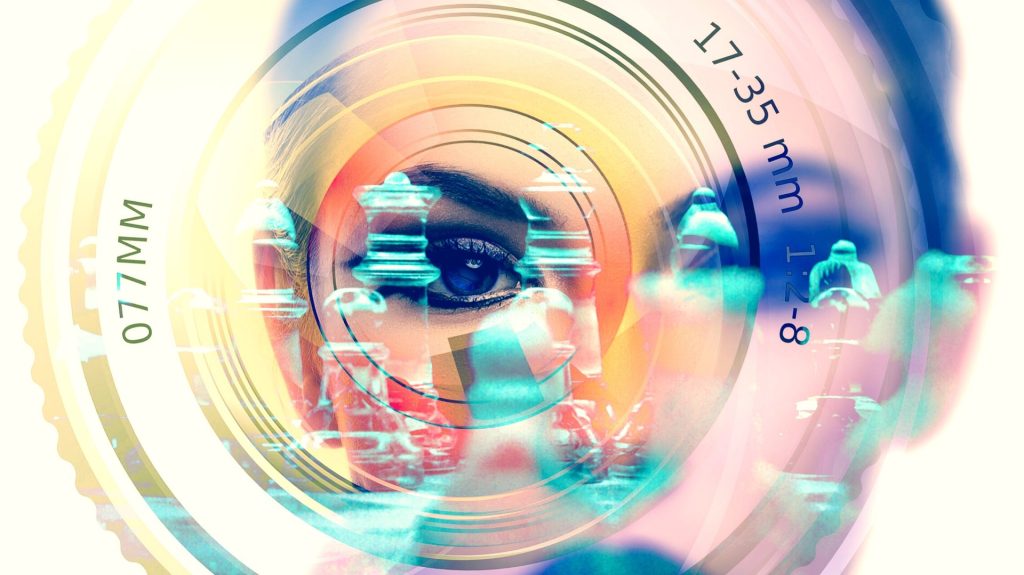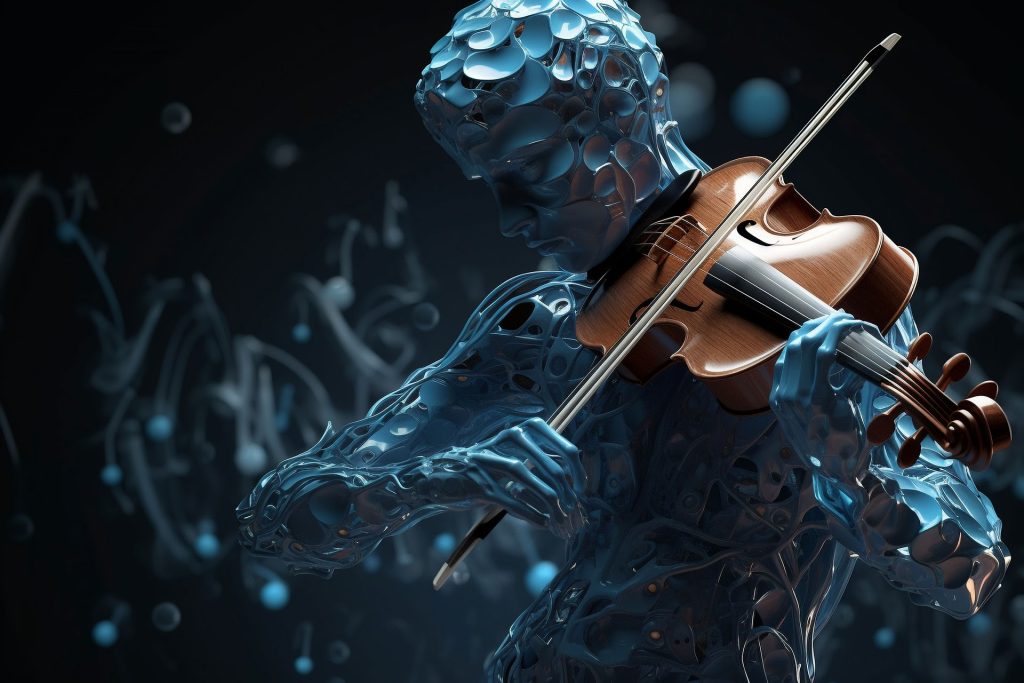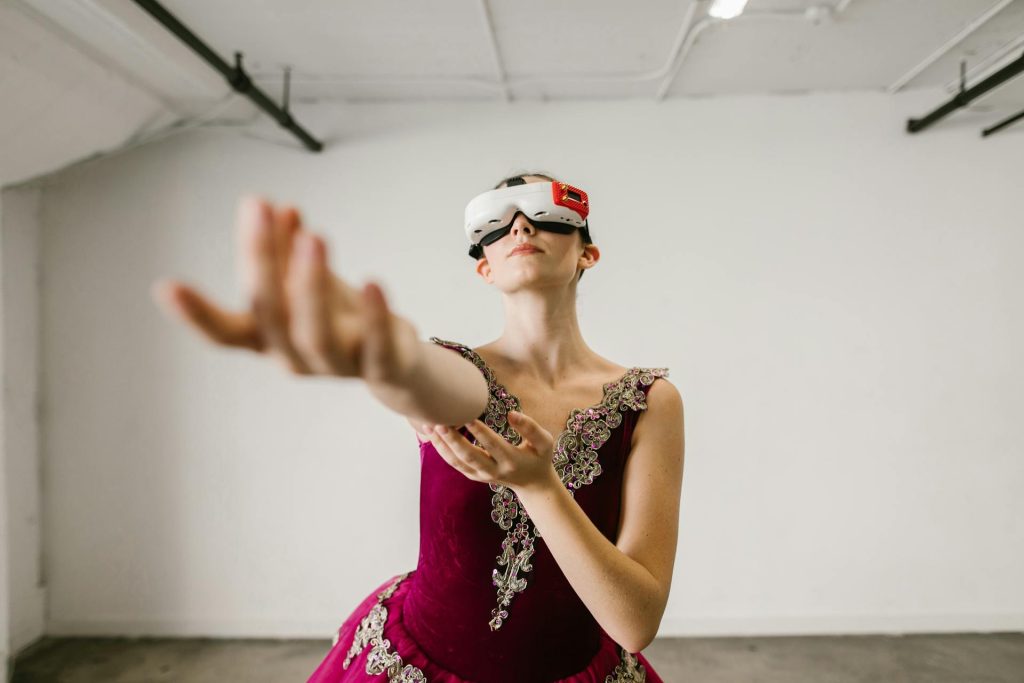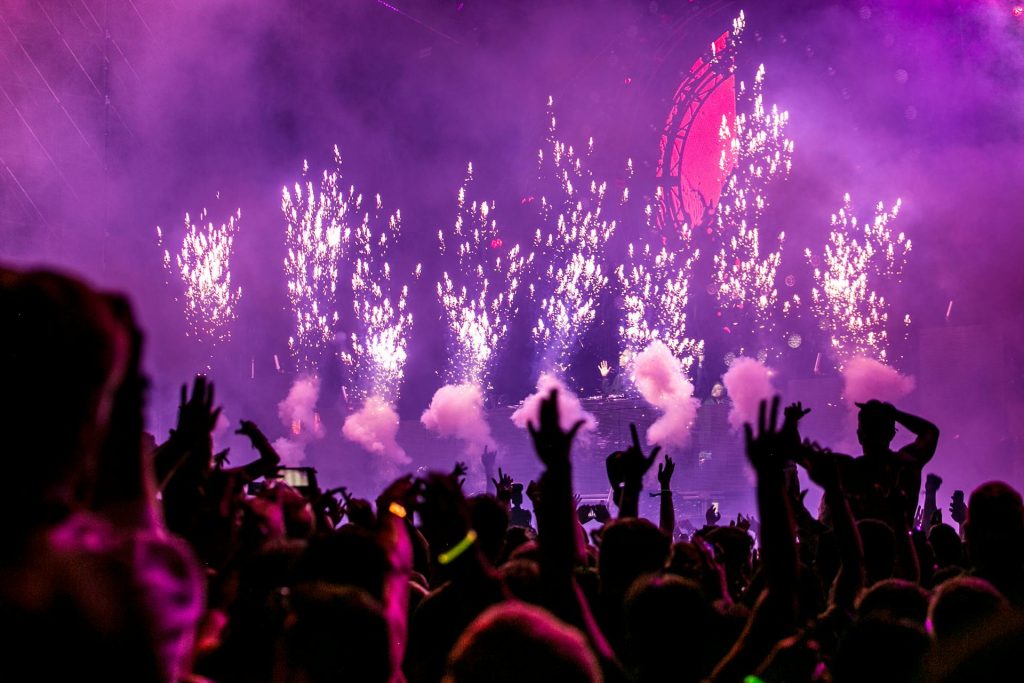Imagine a world where a movie script is generated by artificial intelligence, a virtual assistant helps musicians compose chart-topping hits, and video games adapt in real-time to players’ unique preferences. In this rapidly evolving digital era, the entertainment industry stands at the forefront of innovation, driven by the transformative power of artificial intelligence (AI).
From revolutionizing content creation to delivering personalized experiences, AI has emerged as a game-changer across the expansive realm of entertainment. In this article, we delve into the captivating fusion of technology and creativity, exploring AI’s monumental impact across key entertainment domains.
I. The Far-Reaching Impact of AI on Entertainment
The influence of AI on entertainment is multidimensional, radically enhancing how content is developed, distributed and engaged with.
A. Transforming Content Creation
AI-powered tools provide creators with an invaluable asset – access to voluminous data gleaned from historical trends, market analytics and audience preferences. Armed with these insights, creators can make informed decisions regarding crucial elements like scriptwriting, casting choices and production planning.
For instance, ScriptBook analyzes screenplays using natural language processing, predicting potential box office success. The platform provides studios data-driven risk assessments, helping them greenlight commercially viable films.
Additionally, AI leverages the power of machine learning to actively contribute to the creative process. Aiva, an AI composer, creates original soundtracks after analyzing extensive musical datasets. Artists can collaborate with such AI to push creative boundaries and uncover new musical perspectives.
B. Revolutionizing Storytelling
AI-enabled chatbots leverage natural language processing to deliver interactive narratives that adjust based on user responses. Virtual characters crafted using computer vision and generative algorithms draw audiences into immersive storylines, crafting personalized entertainment experiences.
For instance, interactive cinema utilizes AI to provide viewers agency over branching movie narratives. Audience choices shape the storyline, blurring the line between passive observation and active participation. Such innovation primes the entertainment sector for an era of dynamic, personalized storytelling.

C. Optimizing Content Delivery
Streaming platforms employ sophisticated recommendation engines to analyze viewer activity and suggest personalized content. By identifying user preferences through data aggregation and classification, these AI systems play a key role in optimizing content delivery across digital entertainment services.
Platforms like Netflix and Youtube harness AI to target relevant media to niche customer groups, catering to diverse preferences and boosting user engagement. The use of predictive analytics also allows studios to tailor promotions, maximizing content visibility and distribution efficiency.
II. AI Revolutionizing the Music Industry
The advent of AI in the music industry has accelerated innovation across the creative process, distribution channels and listener engagement. We explore two domains witnessing particular disruption.
A. The Rise of AI-Generated Music
Generative AI utilizes neural networks to produce original musical compositions by studying melodic styles and instrumental textures. Tools like Amper, Aiva and Endel blend machine learning with musical expertise to create production-ready soundtracks personalized to user preferences.
Such AI empowers artists to experiment with innovative combinations of instruments, tempo variations and harmonic sequences. By providing access to limitless mix-and-match musical elements, it significantly eases collaboration between human creativity and algorithmic innovation.
The outcome? An expanded musical palette for composers to craft chart-topping hits! AI-generated tunes also offer promising commercial potential within interactive entertainment like games and virtual reality.

B. Revolutionizing Music Discovery
Music streaming services rely extensively on recommendation engines to suggest songs that match user taste profiles. Using techniques like collaborative filtering, content-based filtering and graph-based algorithms, these AI systems analyze listening patterns across subscriber cohorts to deliver personalized music discovery.
For instance, Spotify’s recommendation engine leverages natural language processing to categorize tracks using semantic metadata. By connecting users to music based on contextual cues like lyrics, acoustics and emotional sentiment, the system facilitates serendipitous discoveries aligned to listener preferences.
Such innovation is critical for user retention across streaming platforms while providing musicians an avenue to organically expand their fanbase. As AI continues to advance, the promise of flawlessly tailored music experiences awaits!
III. The Ascent of AI in Film and Television
AI has permeated diverse cinematic realms – from automating post-production workflows to crafting illusion-shattering visual effects. We explore key entertainment sectors witnessing rapid AI-led transformation.
A. Streamlining Post-Production
Media production houses are increasingly adopting AI to expedite repetitive post-production tasks. Tools like Runway ML automate asset generation, allowing editors to focus more on creative storytelling. Xsens’ motion capture systems rely on computer vision and sensor-fusion algorithms to realistically animate 3D characters, saving studios millions.
AI also assists critical sound editing processes like dialogue replacement and Foley sound generation. For instance, services like Respeecher clone voice actors using just audio samples and video footage. Such tools enable studios to seamlessly recreate dialogues long after production wraps!
B. Pioneering Visual Effects
Visual effects production leverages AI across pre-production, animation and rendering stages. Previs software like Unity Reflect rapidly prototypes scenes, allowing filmmakers to efficiently block complex shots. Deep learning fuels effects like digital skin textures, clothing simulation and hair digitization appearing prominently in movies like Avatar 2.
AI also assists CGI animation – Ziva Dynamics creates high-fidelity muscle and tissue simulations using procedural algorithms. Such software equips studios to craft nuanced character animations at scale. Be it replicating real-world physics or generating photorealistic scenes, AI propels studios to push creative boundaries.

C. Analyzing Audience Behavior
Entertainment analytics is indispensable for networks to optimize content scheduling, ad placement and binge-worthy recommendations. AI complements traditional rating metrics with real-time emotion analysis, demographic profiling and predictive viewership forecasts.
For example, iSpot.tv leverages computer vision to correlate promo conversions with actual viewership. Such analytics allow networks to accurately estimate audience engagement, guiding critical distribution and marketing strategies.
IV. The AI-Driven Gaming Renaissance
AI constitutes the lifeblood of modern game design – from crafting immersive narratives to analyzing player psychology. We explore three vital aspects witnessing an AI-led reimagination.
A. Dynamic Game Balancing
Balancing gameplay difficulty is imperative to prevent boredom or frustration. AI algorithms tackle this by continuously monitoring player metrics like completion rate, deaths and checkpoint reverts. The data feeds reinforcement learning models that tune game parameters to hit the sweet spot between fun and challenging.
For instance, LevelSquid’s AI Game Tuning platform dynamically adapts level layouts, opponent strength and progression pace based on real-time player feedback. Such innovation delivers guaranteed entertainment, pushing gaming to new frontiers!
B. Simulating Human-like Agents
The appeal of non-player game characters is their ability to create the illusion of human behavior. Modern AI equips developers to mimic rational decision making through goal-based navigation, tactical analysis and memory-based learning.
For example, creative platform Spirit AI helps developers easily prototype emotionally aware digital humans usingprebuilt cognitive modules. The result? NPCs exhibiting complex motivations and moral dilemmas, crafting unprecedented realism in story-driven adventures!
C. Cultivating Player Relationships
Humanizing the player-game relationship is pivotal for long-term retention – a niche revolutionized by conversational AI. Chatbots like Angelina analyze gaming chats to determine player moods and aptly respond with empathy and encouragement.
UK-based Spirit AI takes this further with artificial companions like Holly, who establish meaningful bonds by remembering player choices and infusing positive psychology within game interactions. Such innovation poises the industry for a new paradigm valuing psychological nourishment alongside entertainment.

V. The Advent of AI in Immersive Realities
AI constitutes the invisible fabric empowering users to transcend physical boundaries and immerse themselves in fantastical sceneries. We uncover the technical marvels fuelling this riveting revolution.
A. Building Expansive Virtual Worlds
Crafting expansive metaverse landscapes hinges critically on intelligent scene generation powered by AI. Algorithms like NVIDIA Merlin reconstruct realistic environments using only crude sketches as input. Housed within game engines like Unity, these models populate vast open worlds ripe for exploration.
AI also assists sound design tailored to gaming worlds of unprecedented scale. For instance, tech start-up Altered AI analyzes game contexts to generate ambient soundscapes and reactive musical scores, magnifying players’ sense of presence.
B. Enabling Intuitive Interactions
Multimodal interfaces drive user engagement by enabling natural interactions within virtual environments. Hand tracking algorithms empower realistic gestures to manipulate virtual objects. Speech recognition allows users to fluidly navigate menu systems using voice commands.
For instance, VR animation tool Animaze seamlessly transforms users’ movements and speech into animated sequences in real-time using computer vision and NLP. As AI continues maturing, the path towards immersive symbiosis inches ever closer!

C. Crafting Adaptive Narratives
AI is transforming storytelling from a passive experience into one where users actively participate in evolving adventures. By incorporating player choices within branching narrative arcs, today’s interactive cinema tailors
VI. Challenges and Considerations for AI in Entertainment
While AI innovation continues accelerating entertainment’s digital transformation, integration complexities persist alongside ethical implications that warrant further deliberation as adoption expands.
A. Overcoming Algorithmic Bias
Entertainment analytics relies heavily on AI to parse nuanced audience signals across fragmented distribution channels. However, imperfect data coupled with narrow algorithmic lenses risk amplifying demographic biases during content optimization.
Mitigating bias requires comprehensive model evaluation, testing across representative user cohorts and emphasizing data transparency. As recommendations shape viewer preferences at scale, maintaining impartiality and intellectual humility becomes imperative.
B. Ensuring Data Privacy
Media analytics and recommendation engines process extensive personal data which raises critical privacy concerns. While aggregation provides business value, consumers rightfully demand more visibility and control over information use.
Adhering to evolving regulations like GDPR while providing opt-out preferences constitutes crucial first steps towards establishing data ethics frameworks that balance business interests with user rights.
C. Evaluating Environmental Impact
The computational intensity of entertainment ecosystems – from streaming infrastructure to VR content delivery – necessitates accounting for externalities like energy consumption, e-waste and carbon emissions.
As immersive technologies continue penetrating entertainment and beyond, architects must emphasize sustainability through measures like transitioning to renewable infrastructure, optimizing energy-intensive workloads and pioneering eco-friendly disposal frameworks.
VII. The Captivating AI-Driven Future of Entertainment
Undoubtedly, AI constitutes the driving force behind entertainment’s digital metamorphosis – from enriching content creation to economizing distribution. As algorithms continue maturing, the stage is set for catalyzing human imagination at unprecedented capacity.
Be it collaborative music crafted by generative AI, film storylines optimized using predictive analytics or theme parks powered by emotional intelligence – personalization will reach soaring new heights! Virtual beings manifesting as digital twins may progressively blur reality’s boundaries until human and machine creativity become indistinguishable.

Truly, the possibilities abound in this symbiotic future where artificial intelligence and human artistry reinforce each other to manifest the ultimate expression of ideas, opinions and facts for public enjoyment!
Copyright©dhaka.ai
tags: Artificial Intelligence, Ai, Dhaka Ai, Ai In Bangladesh, Ai In Dhaka, USA



